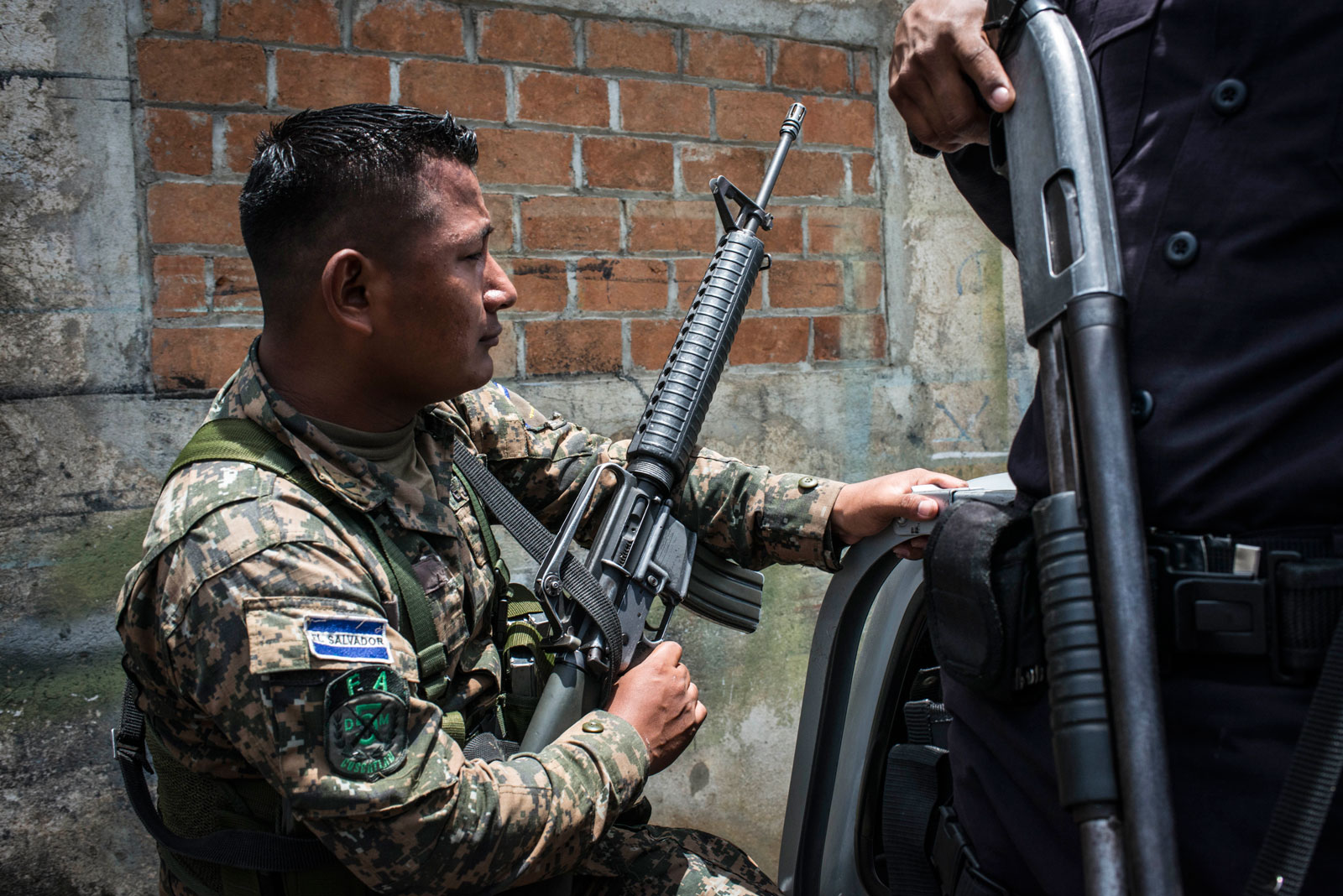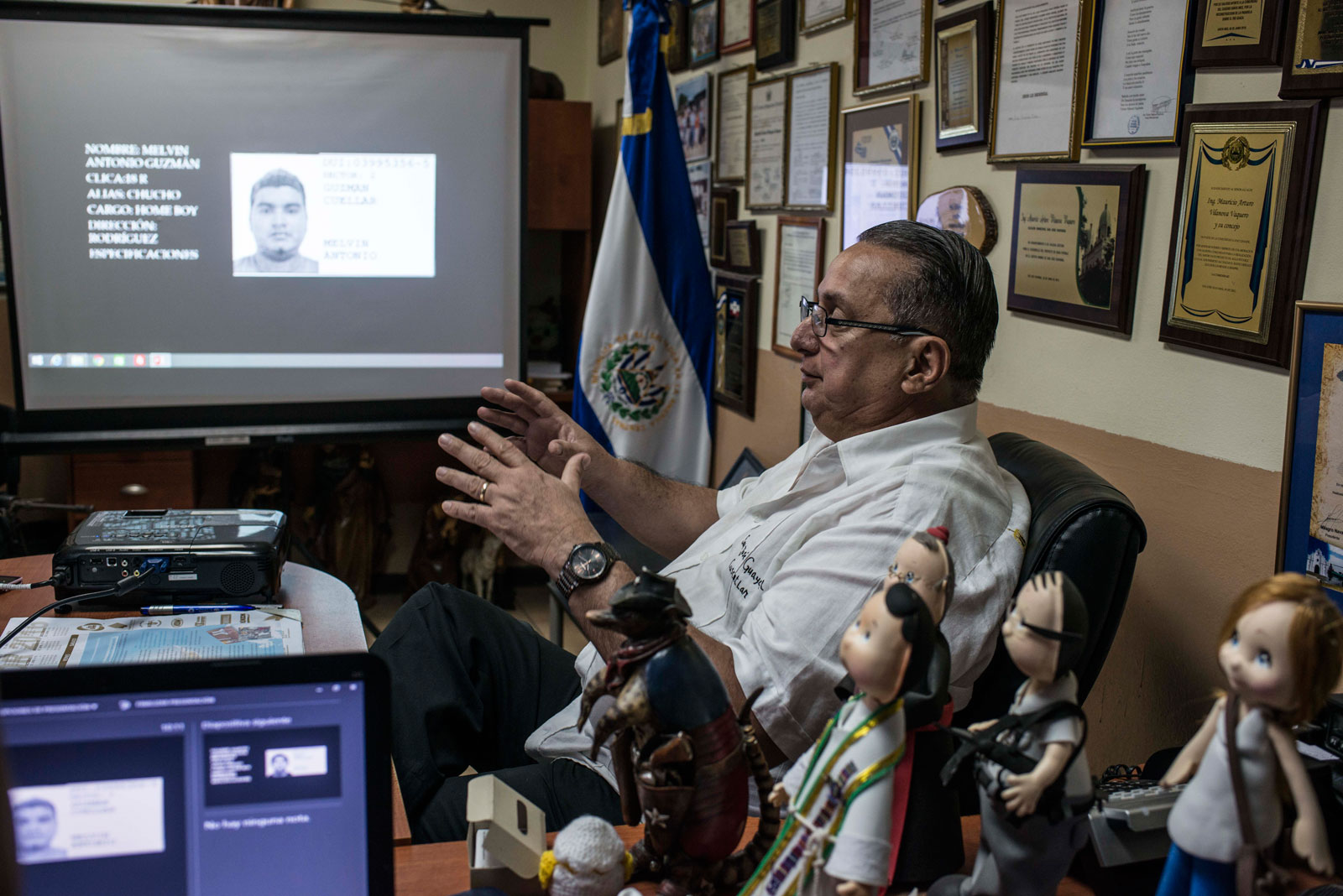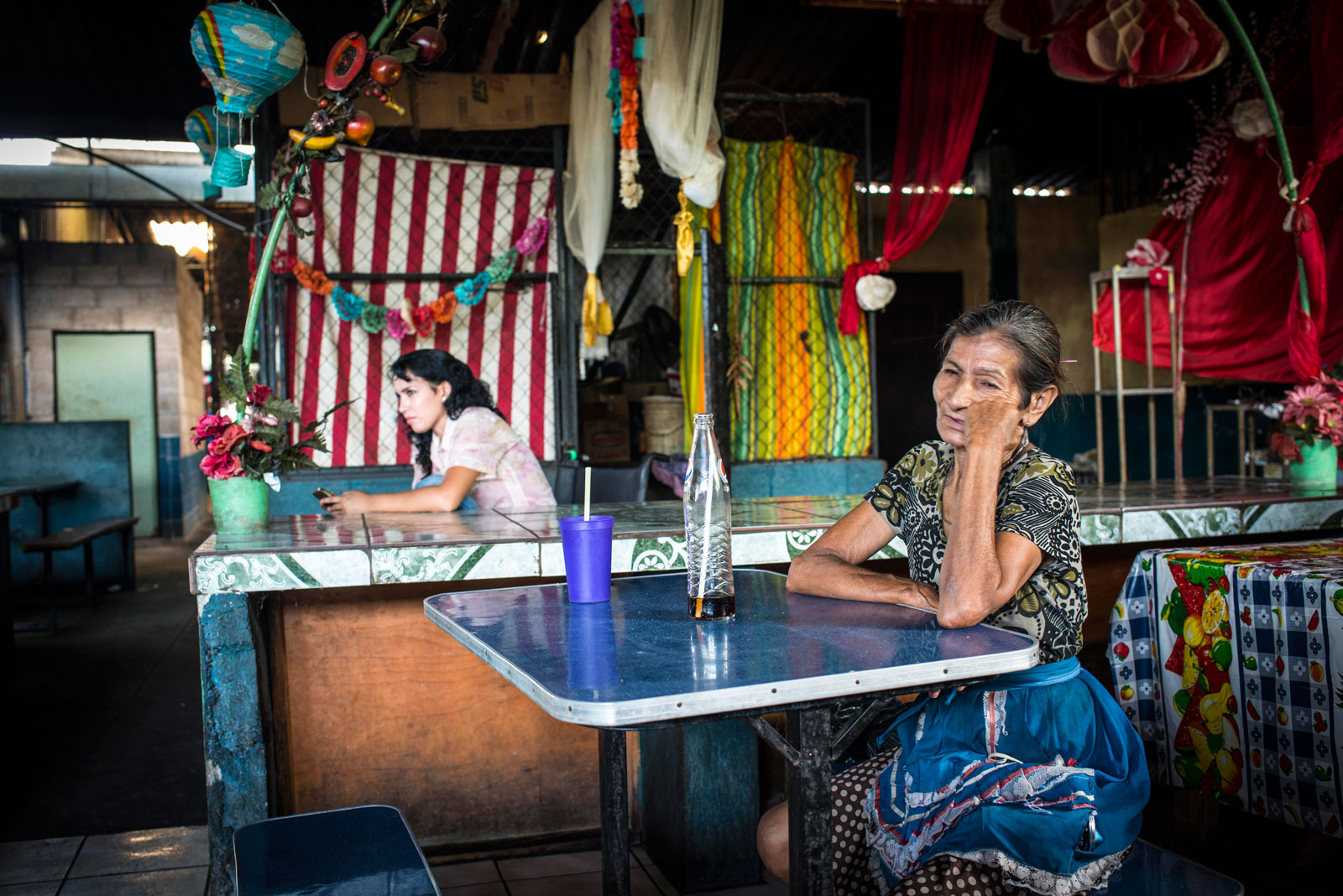The small town of San José Guayabal is located in a region of dry, flat land about forty minutes north of San Salvador, the Salvadoran capital. Most of its 11,000 inhabitants work in farms, growing onions and corn, and it has little to distinguish itself from other places in the area. But in one sense, it is remarkably different than almost anywhere else in El Salvador: in recent years, it has apparently been largely free of violent crime.
The Salvadoran Civil War ended twenty-five years ago, when the right-wing military government entered a peace agreement with the leftist rebels it had been fighting since 1979. But it’s not uncommon to hear Salvadorans describe the current situation in their country as a “state of war” or “like the war” or “worse than the war.” In 2015, the murder rate reached an all-time high: 6,657 were killed in a country with a population of just over 6 million. And nearly 300,000 of the country’s citizens—a number equal to the entire population of the capital city—now find themselves displaced from their homes by violence. Every year a growing number try to flee the country, many of them children or unaccompanied minors. El Salvador has recently been called “the most violent peacetime country in the world.”
Much of the violence has been driven by a turf war between the country’s two largest street gangs, Barrio 18 and Mara Salvatrucha (MS-13) and the government’s fight to quell them. Both gangs originated in Salvadoran immigrant communities in Los Angeles in the 1980s, where many had gone to flee the civil war. But when a large number of undocumented Salvadoran migrants were deported back to El Salvador in the 1990s, the gangs traveled with them. Those returning arrived in a state still recovering from a war that had left 75,000 dead and the country’s infrastructure weak, and with little opportunity. Gang members strengthened existing groups, and quickly recruited new followers. In the decades since, the gangs have consolidated their power across the country, mostly through extortion. (While some gang members do sell drugs, they are street-corner dealers and generally not affiliated with international cartels.) The government takes a hard-line approach to these gangs that, many claim, exacerbates the situation.
Today, in many parts of the country, gangs dictate a significant part of the economy and much of what goes on in daily life. In 2014, citizens filed an average of seven complaints of extortion a day, while the national board of small businesses calculates that 70 percent of small companies regularly pay renta (protection money) to gangs. A recent study by the country’s central bank found that Salvadorans paid gangs a total of $756 million yearly. These payments, it concluded, combined with the lost income from people afraid of taking jobs and the money spent by many households on private security and other ways to ensure their own safety, cost the country 16 percent of its GDP.
Though they are unmarked, every local knows the borders of a given gang’s territory. Citizens avoid crossing them, fearing that they might be killed. Many Salvadorans don’t like to even mention the gangs and instead refer to them by different code words—“The Numbers” for Barrio 18 and “The Letters” for Mara Salvatrucha. Private security men with rifles stand outside restaurants and stores, even in peaceful neighborhoods. (People don’t trust a business that isn’t guarded by a man with a rifle, one Salvadoran told me.) Gangs control how and if citizens can move freely. Bus drivers who cross in and out of different gang territories must pay up. According to reporters at the Salvadorian investigative paper El Faro, 692 transportation workers have been killed in the last five years. In August 2015, gang members in San Salvador told all bus drivers to stay home; then they killed six who disobeyed and continued their routes. San Salvador slowed to a halt for four days. Businesses stayed closed. Schools canceled class.
But the largest effects of the violence are often invisible. Fear of gangs prevents students from going to school and young people from holding jobs. According to one report, nearly 40,000 children dropped out of school in 2015, primarily out of concern for their own safety. Such is the fear inspired by gangs that even rumors can provoke panic. Last year, word spread that only girlfriends of gang members could have blonde hair; the next day, women around the country began dyeing their hair black to avoid any trouble. (Alarmingly, the murder of Salvadoran women has risen 750 percent over the past five years.)
It was this crisis that led me to visit San José Guayabal, the town north of the capital that has recently been celebrated in the press for being violence-free. For years, the national government has been trying to address the rampant gang problem in various ways—with little to show for it. In 2003, then-president Francisco Flores launched Mano Dura (“hard fist”), a law-and-order strategy aimed at regaining control of the streets and rounding up gang members. But as Sonja Wolf describes in her new book Mano Dura, more than 95 percent of the nearly 20,000 arrests made were dismissed in court for lack of evidence. More recently, in 2012, the government secretly facilitated a truce between the two main gangs, bringing a temporary lull in the violence, but it was short-lived. Things have been even worse since it broke down.
Advertisement
In San José Guayabal, Mayor Mauricio Vilanova says he wanted to try a different approach. Worried about growing gang violence in the area, in 2014 he decided to form a committee to implement preventative measures among the population. He claims to have turned his citizens into “antennas,” supplying them with phones and encouraging them to contact him when they might have information, as gangs do. Accounts in the national press suggest he has been very successful: while inter-gang violence has continued, there have been hardly any murders of civilians in the town, he claims.
When I arrived with a few other journalists to meet Vilanova last August, the mayor wouldn’t let us go directly into the town, so we waited at a gas station for him to escort us. It was a Sunday, and funeral processions were going by—the casket on the back of a truck, followed by mourners in a pick-up. When the mayor arrived, the back of his truck was filled with armed guards carrying assault rifles. We followed the car down the road to the town, which was decorated with gang graffiti. Where graffiti had been covered up, replacements had been freshly painted. The wall of a school featured a picture of an angel next to a large “MS,” the insignia of the Mara Salvatrucha, painted over in red.
At his office, he explained his crime-fighting strategy. He said that local citizens frequently come to him with reports about who might be about to join a gang or who might have committed a crime. (At one point, he interrupted the conversation to let us know that someone had contacted him. “I just received a WhatsApp,” he said. He read it aloud: There was new information about a murder at a pupuseria.) “We want people to participate in prevention,” he continued. People create soccer fields but when young kids leave, they put their gang colors back on. He highlights the job-training programs he has created for local citizens. In one program, town members make little dolls called “foamys,” which can then be sold, though it wasn’t clear to whom. Some people made dolls of Vilanova and his wife, which he keeps by his desk. The doll of his wife is dressed as a civilian and has glasses. His doll is holding an Uzi.
Vilanova showed us a slideshow of gang members he knew of in the area, identifying each by their affiliation and their aliases—El Caballo, El King Kong, El Vaca. This one, he said, pointing to one slide, “we have under control, we talked to her mom.” That one works with directives from her father in jail. This one is only eighteen, but he’s killed twenty to thirty people. That one teaches “satanic things, like smoking marijuana.”
Their capture seems to be always on his mind. Later in the day, Vilanova took us to a wedding he was officiating. It was in the bride’s house, a small yellow structure on the outskirts of town. Armed men walked behind the mayor as he blessed the couple and told them about the importance of following the Bible. He gave a long and rambling speech about family values. He asked the groom if he cooked and ironed and stressed that domestic work had to be shared. He made an off-color joke that was met with laughter. Then, during the reception, he showed off images on his cell phone of young men he had apprehended.
Vilanova made it clear that he believed that his approach was working. But it was hard to tell what the townspeople really thought about it. When I asked to talk to some locals, he brought me toward a group of men sitting in the town square and asked them himself: “Am I doing a good job? Is there extortion? Are you happy to live here?” On the walls of the town, murals exhorted teens not to get pregnant and advised against domestic violence. Some had a menacing quality. In one mural, a man reached up to hit his wife, only to be stopped by an angel grabbing his arm.
Advertisement
At his house, where dogs and cats were roaming around, Vilanova talked about the importance of family planning and lamented that Salvadorans were having more children than they could support. The government could order people to undergo vasectomies, he suggested. Local governments should have more power, he said. At one point Vilanova referred to gang members who had fled town. How had they been discouraged? The mayor talked about how he would regularly drive past the homes of people he considered criminals. “We like them to know that the mayor controls the territory.”
Could Vilanova’s strategy—or a similar preventative approach—be replicated at a national level? In recent times, the Salvadoran government has been talking more about addressing the social forces that give rise to gang activity. For example, the government’s current anti-violence program, Plan El Salvador Seguro, gives priority to strengthening communities by reducing youth unemployment and helping former prisoners and gang members reintegrate into society, at least on paper. But there isn’t much evidence that these programs are working, or even being actively supported. Meanwhile, the government’s main strategy has changed little: the Salvadoran army has expanded by over 50 percent in the past few years and clashes between police and gangs—in which civilians are often killed—have become increasingly frequent. Mano dura, one analyst told me, has become more like mano brutal.
“There’s a double speak” in the government’s approach, said Verónica Reyna, Deputy Director of Human Rights at Passionist Social Service, a Salvadoran NGO that helps citizens who have been targeted by the police. Despite the talk about social programs, she said when we talked last fall, “what they implement are repressive measures in the population.” In a recent case Reyna worked on, a young man who taught breakdancing at a local youth institute was beaten up by police. When he tried to fight back, police took him into custody where he was tortured by having his testicles electrocuted. They let him go without explanation before he hit the seventy-two hour mark, after which they would have had to make a formal charge. This sort of brutality isn’t just a case of mistaken investigation, she indicates. Police know who the gang members are, she says, and they fear retribution if they attack them. So they go after non-gang members to show that they are doing something.
In her book, Wolf examines three Salvadoran NGOs that have long sought alternative strategies to end the violence, including more resources for prevention and rehabilitation programs. But the government has largely brushed aside these ideas, she observes, deeming them secondary to law enforcement and repression. Human rights experts have warned about the growing use of lethal force by the state, noting that from 2013 to 2015, 91 percent of those killed in clashes between police and gangs were gang members while just 9 percent were police. Some speculate that this is because the gangs are less well-equipped than the police. But many human rights workers suggest that government forces are killing indiscriminately.
Nor does the government account for civilians who are killed in anti-gang operations. “Poor male often automatically means ‘gang member’ in the eyes of law enforcement,” says Larry Ladutke, Amnesty International’s specialist for El Salvador. The government seems to worry more about appearing to go soft than about possible human rights abuses; the vice president has said that police should be free to shoot to kill if threatened.
The country’s human rights agency is currently investigating 119 alleged extrajudicial killings by members of security forces between 2013 and 2016 as well as 161 homicides attributed to death squads. In May, the police arrested twenty-two people, including six officers they said had dressed up as active-duty police officers in order to carry out contract killings. They claimed that they received between $100 and $1,000 for their services from civilians and other members of the police. Among those who had been killed were an old woman in a wheelchair and a twelve-year-old. The police have been killing an average of 35 gang members a month since January 2015.
In San José Guayabal, when I asked Mayor Villanova how many had been killed under his administration, he said there had been only one death in recent years. But he clarified: there had been only been one death “that we lament,” a death of an upstanding citizen. Gang members, or people he believes to be gang members had regularly died. The National Police could not provide me with statistics about the murder rate in San José Guayabal or the surrounding area, despite multiple requests. A press officer instead sent over a statement by the head of the police saying that the homicide rate had recently gone down nationally: “In 469 recent shoot-outs, 429 members of criminal groups had been killed.” In such an environment, how can one tell who is a savior and who is a strongman? For Salvadorans, this is a calculation that needs to be made every day.
Reporting was supported by the International Women’s Media Foundation. A second article, by Aryeh Neier, will examine the continuing quest to address human rights crimes from El Salvador’s civil war.




